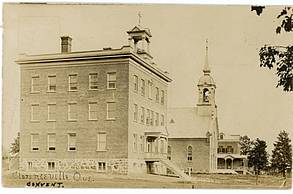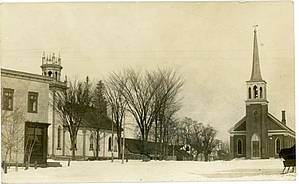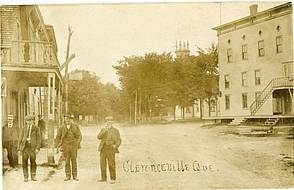

Share
A Tour Around Clarenceville
September 26th, 2016
The beginnings of Clarenceville can be traced back to the late 1700s, about the time of the U.S.’s War of Independence, when those loyal to the British crown sought refuge in Canada. Among the early settlers were the Salls, Dericks, Beerworts, Vaughans, and Hawleys, who came to an area that was initially, called Christie’s Manor. It officially became Clarenceville in 1845, based on the name of the post office there, which was named for King William IV who was initially the Duke of Clarence.
Renamed in 1989 after the parish, the municipality is now known as St-Georges-de-Clarenceville. The town is located just north of the Canada/US border, in between Missisquoi Bay and the Richelieu River. In the 19th and early 20th centuries, Clarenceville served as an important supply centre for the surrounding agricultural communities as well as a customs post. At the turn of the 20th century, it included four churches, a hotel, two cheese factories, a mill, a school, a convent and six stores.
A drive through Clarenceville today will find only pieces of the past visible in its present landscapes, small testaments to the thriving village centre that it once was. Among the ETRC’s collection are a number of postcards from 1905 to 1915 with views from the Clarenceville of a century ago. They are fantastic windows onto a past long gone and offer so many views of the town that it’s almost possible to imagine yourself in Clarenceville 100 years ago, strolling down the dirt streets lined with trees, past all the shops and waving to familiar faces.


